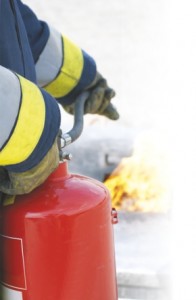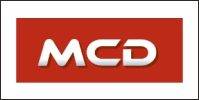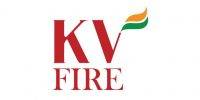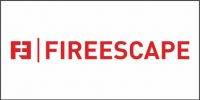An effective fire safety management within a building is a must for mitigating a fire
 A fire can happen at any time in a building or premises irrespective of its occupancy status and size. Managing fire safety in a building especially in a high rise building, is much more difficult as the problems of these buildings are more complex. Thus an effective fire safety management within a building is a must for mitigating a fire. An effective fire safety management can be made only when we have a fire safety strategy. This article will deal with developing a fire safety strategy in a building.
A fire can happen at any time in a building or premises irrespective of its occupancy status and size. Managing fire safety in a building especially in a high rise building, is much more difficult as the problems of these buildings are more complex. Thus an effective fire safety management within a building is a must for mitigating a fire. An effective fire safety management can be made only when we have a fire safety strategy. This article will deal with developing a fire safety strategy in a building.
A fire safety strategy for a building can be made up of the following essential elements.
1. Passive Fire Safety Measures
2. Active Fire Safety Measures
3. Fire Control Measures
In order to function the building safely, each of these elements must be adequately provided.
Passive Fire Safety Measures
Passive fire safety measures are features which are built into the structure of the building and are physical features of the building provided by a developer, owner or occupier. These features include provision of:
Fire resistance to the building structures Access to and around the building Mechanical Smoke Extractors Automatic Fire Dampers Fire Staircases Fire Lifts Fire Stops / Fire Resisting Doors Fire Tower LPG/PNG pipelines Travel Distance Escape routes and exits Refuge Area Refuse Chutes
Active Fire Safety Measures
 Active fire safety measures are the system which activate in the event of an outbreak of fire which are provided by a developer, owner or occupier. The system would include:
Active fire safety measures are the system which activate in the event of an outbreak of fire which are provided by a developer, owner or occupier. The system would include:
Emergency lighting Firefighting Water Tanks Fire Extinguishers Hose Reels Landing Valves Dry /Wet Risers Down Comers Courtyard Hydrants Firefighting Pumps – Electrical/Diesel / Jockey / Sprinkler / Booster Fire detection Systems Fire Alarm System Fire Sprinklers Fire Suppression Systems.
Fire safety management within a building must include a full appraisal of active and passive fire protection measures within the building. All deficiencies in the fire protection measures should be noted and a management of remedial works to upgrade the building to an acceptable standards should be put in place.
Fire Control Measures
Fire Control Measures relate to the day to day management of fire safety in a building. There is a legal responsibility on occupier or persons having control over building or premises to take reasonable measures to prevent the occurrence of a fire and to protect the lives and property of occupants in the event of fire.
The passive and active fire safety measures outlined above could be completely negated unless the building occupants are aware of the significance of the measures and the action need to be taken in the event of fire. A fire safety programme must be established in a building in order to correctly manage fire safety and meet all legal obligations. A person should be designated as a Fire Safety Officer with responsibility for drawing up, implementing and overseeing the fire safety programme.
The Fire Safety Officer should also be of adequate status and should have authority to effectively discharge his responsibility. However, if the building does not have adequate active and passive fire safety measures, more stringent fire controls measures will be required.
The elements of Fire Control Measures may include:
Emergency procedures Plan Fire Evacuation drills Regular fire safety inspection Maintenance and servicing of fire equipment Staff training Information to occupants Keeping of records
Emergency Procedures Plan
An emergency procedures plan should be prepared outlining the procedures to be followed during an emergency. The plan should be prepared by keeping in mind that all occupants must be capable of responding correctly in the event of fire. This predetermined plan can be broken down into a number of sections such as:
Procedures for raising the alarm Procedures for calling the fire brigade Procedures for Evacuation Procedures for Assembly Point and Roll Call Procedures for fighting the fire Procedures for assisting the fire brigade
Procedures for Raising the Alarm:
There are various types of fire alarm system. Depending upon the size and nature of the building /occupancy, the fire alarm system may be very simple or very sophisticated. It should be born in mind that all occupants should be aware of how to raise the alarm. All occupants/ employees should be aware of how to raise the alarm. The source of alarm must be monitored regularly. Whole premises should be warned through the Public Address System in such a manner that should not generate any panic amongst the occupants. The system should be incorporated to disseminate the information to other emergency support services. Pre-determined area should be identified for refuge or assemble of the occupants.
The assembly or refuge area must have the access of the emergency vehicles like ambulance or fire service vehicles. Roll call should be taken to ensure that all occupants/ patients are evacuated from the danger zone and the missing person should be notified to the Fire Service and Police Authority.
Procedures for calling the Fire Brigade:
The Fire Brigade should be called immediately in the event of a fire. In the commercial buildings where there is a receptionist or telephone operator he/she is usually given the responsibility of contacting the Fire Brigade. In residential buildings, generally a Manager or Fire Officer or any authorised person of the society does these duties. It may be added here that while calling the Fire Brigade, one should give clear information such as, name of the building, directions to reach the building, type of occupancy, and if possible also the information such as, location of fire, size of fire, materials involved in the fire, persons missing, nearest water body available, telephone number of the caller, etc…
Procedures for Evacuation:
It is an important element and requires meticulous planning. Once the fire alarm has been sounded, initiate the evacuation procedure. The evacuation procedure will depend on the building use or type of occupancy. e.g. the evacuation procedure for a residential building will be different from the procedure for hospital building or a manufacturing unit or a commercial building. The evacuation strategy can be decided based on the circumstances and size of the fire/emergency. They can be chosen from the types of evacuation systems such as (i) Phased, (ii) Progressive, (iii) Total Building, (iv) Partial, (v) Self, (vi) Stay-in-place or combination of any one or more.
Procedures for Assembly Point and Roll Call:
Every premises whether it is a high rise residential building or a commercial building or a manufacturing unit, should designate an assembly area or areas of the buildings. The assembly area should have a clear of access points for the Fire Brigade. In the event of a fire or emergency, all building occupants should proceed to the assembly area. At the assembly point, a roll call should be taken to ensure all occupants are accounted. Missing persons should be notified to the Fire Brigade when they arrive at the scene.
Procedures for Fighting the Fire:
It must be kept in mind that in the early stages of a fire, it may be possible to successfully contain the fire or extinguish it with first aid firefighting equipment such as fire extinguishers. However, to accomplish this, the occupants or staff members should be instructed in the use of hand held extinguishers and hose reels. In this connection certain members of the occupants or staff may be designated as a firefighting team, as part of the emergency procedures. Their functions would be to assess and "if safe to do so", tackle the fire with the available equipment, until the Fire Brigade arrive.
Procedures for Assisting the Fire Brigade:
When the Fire Brigade arrives, they need to be given as much as information as possible, in order to take the best course of action. The type of information required includes: location of the fire, materials involved, details of missing persons, location of nearest fire hydrants, location of all access doors to the building. The Fire Brigade should also be provided with the keys for any locked areas.
Fire Evacuation Drills
The aims of an evacuation drills are:
To ensure safe, orderly and efficient evacuation of all occupants of the building to use all exit facilities available in order that occupants are familiar with themTo test all aspects of the emergency proceduresTo achieve and change the attitude of many that reacts irrationally when confronted with a fire or other emergency situation
Fire evacuation drills should be carried out at regular intervals to test the effectiveness of the predetermined arrangements.
Regular fire safety inspection
Fire safety inspections are a check of all fire safety procedures, installations and records within a building structures to determine compliance with appropriate legislation and regulation. A fire safety inspection helps to ensure that the owners and occupiers of buildings are meeting their responsibilities under the legislation, that buildings are fitted with correct fire safety installations required by the fire safety standard, and that these fire safety installations are maintained in an operational condition. The fire safety inspection will involve an inspection of the building's fire safety installations and an inspection of the maintenance records for each of the fire safety installations in the building. It is a visual check of fire safety in a building using a standard fire safety inspection checklist of legislative requirements. They are generally carried out by the qualified officers of the local fire brigade or an agency authorized by the local fire brigade or fire safety consultants.
Maintenance and servicing of fire equipment
Management and maintenance of fire safety provisions are important as it is necessary to assure that the fire safety provisions installed in a building can operate effectively for the intended life of the building. Effective fire safety management can reduce potential fire danger, assist occupants to reach the ultimate place of safety in case of fire and regular maintenance will ensure all fire safety provisions in the building can be kept in good workable conditions.
Maintenance & management of fire safety provisions should be carried out through the following means:
Passive fire safety provisions at common parts should be inspected and repaired under the Building Regulations. Active Fire Safety provisions should be inspected, tested and maintained by the "Licenced Agencies" or competent contractors or agencies. Ventilating Systems should be inspected by the "Licenced Agencies" or specialist contractors on ventilating systems. Competent persons, e.g. authorised persons, should be commissioned by the occupants or building owners to carry out inspection, maintenance and certification of fire safety provisions. Checklist on housekeeping should be provided to guide the carrying out of routine maintenance works on passive fire safety provisions and the certification of any irregularities identified. Such guidelines would enhance the owner's awareness on fire safety and are effective means on fire safety management for buildings.
Staff train in
Staff training is an important element in fire safety management in particular high rise residential and commercial buildings. The security staffs, members of the fire Team other employees and staffs, who are connected with routine maintenance of firefighting installations and emergency evacuation plan need to be trained in the fire emergency procedures described in their approved fire safety and evacuation plans.
These groups shall be apprised of the fire hazards of the materials and processes to which the employees and occupants are exposed. Each employee shall be instructed in the proper procedures for preventing fires in the conduct of their assigned duties. They shall be familiarized with the fire alarms, evacuation signals, their assigned duties in the event of an alarm or emergency, evacuation routes, areas of refuge, exterior assembly areas, and procedures for evacuation. They shall also be trained to know the locations and proper use of portable fire extinguishers or other manual fire-fighting equipment and the personal protective equipment required for its safe and proper use.
Information to occupants
The information to occupants is also an important element in fire safety management. The management should prepare an information sheet containing various actions required to be taken by the occupants in the event of a fire or an emergency. The information sheet should contain the features relating to:
What they should know about the occupants safety.To whom they should report if the occupants finds any blocked exits, faulty call points, etc.What and how they should act if the occupants discover a fire.What and how they should act if the occupants hear evacuation instructions.
Keeping of records
Record keeping is also an important element in fire safety management. Management is responsible to maintain a series of records to meet the statutory requirements. They include:
Conditional / Final NOC from the Local Fire Brigade Occupational Certificate from Municipal Corporation Lift Certificates Repair & Maintenance Register for Building Maintenance Register for Fire Hydrants Filling & Servicing Register for Fire Extinguishers Maintenance Register for Sprinklers Maintenance Register for Hose Reels Register for Fire Fighting Training Register for First Aid Training Register for Emergency Plan Training
In addition to the above, the management is also responsible to keep various certified architectural drawings and floor plans for various locations of the building and these may include: Fire Route, Fire Hydrants, Exits, Water Tanks, Lift Rooms, Electrical Rooms, Fire Extinguishers, etc…
Conclusion
The fire safety management plan should include providing water reservoir exclusively for firefighting as prescribed in National Building Code (NBC). Fire hydrant ring main with yard hydrant & wet riser system with landing valve shall also be installed as per NBC. First-Aid Hose Reel is to be provided near each landing valve tapped off from the wet riser. Sprinkler system is also to be provided for all the floors & other places / areas as applicable as per NBC Code. It is advisable to provide fire detection & alarm system for the entire building. Public address system with two way communication system shall enhance the communication system. As the equipment such as: fire alarm panel; public address system console; fire pumps; fire lifts; and staircase lighting needs continuous power supply, emergency power supply shall be made available.
The fire safety management plan also should address various preventive measures. These include checking & testing of all electrical installations periodically by competent electrical engineers, and if found, all loose electrical wiring shall be replaced immediately. Lift shaft and staircase lobby / landing shall be free from any obstacles / obstructions. Good housekeeping in all area, specially stores, electrical installation, transformer house and waste disposal area, etc. should be maintained. Firefighting drill and evacuation drill should be held on regular basis. On site emergency / evacuation plan shall have to be prepared and update at regular intervals. Above all, periodic review and audit to the procedures stated above should be conducted for ensuring the adequacy of the existing fire safety provisions.




















































